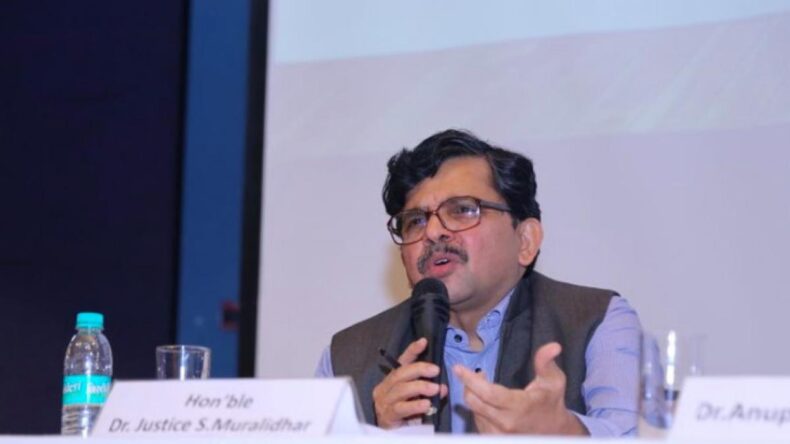On the auspicious day of Ambedkar jayanti, Orissa High Court Chief Justice, S Muralidhar, addressed a lecture organized by the Community for the Eradication of Discrimination in Education and Employment on “Appearing in Court: Challenges in Representing the Marginalized”. During his lecture, he made a strong statement that the Indian laws are shaped to discriminate against the poor and that the system works differently for both the rich and the poor.
Chief Justice Muralidhar said that a marginalized individual suffers numerous obstacles in obtaining justice. Even for an educated, literate person, the laws and processes are perplexing. The laws are written in such a way that they discriminate against the poor. In his lecture, he presented statistics to have a clear picture. He said, out of 1.13 lakh of the convict population, 21% belong to the Scheduled Caste and 37.1% of convicts belong to the Other Backward Class.
Similarly, 21% of the under-trial population of 3.72 lakh in India belongs to SCs. He also mentioned that 17.4% of those under trial and 19.5% of the convicts are Muslims. He said that most of the citizens who are under trial continue to face hardships and remain in jails despite being provided with bail because of their inability to arrange surety bonds.
On the matter of the quality of legal aid in the country, for those who are unable to afford legal representation, Justice Muralidhar also conveyed his considerations. He further said that the lack of confidence in legal aid lawyers is a reflection of the general approach to welfare services by the providers. He calls it the “ration shop syndrome.”
The impoverished believe that if a service is provided for free or at a significant discount, it is impossible to demand excellence. According to a study, lawyers from the Dalit and Adivasi communities who work on human rights matters are at risk of being labeled as Maoist or Naxalite lawyers.

He said that the Constitution recognizes people who have been denied justice for years because of their birth, descent, caste, or class, and it also envisages the state making affirmative efforts to address such historic injustices. He further stated that SC, ST, Dalits, Adivasis, socially and educationally disadvantaged classes, economically disadvantaged classes, and a variety of others, including religious and sexual minorities, differently-abled children, and youngsters in dispute with the law, are among them.
Then there are status offenders, such as sex workers, mentally ill people, and others, whose very existence and every behavior is criminalized, and as a result, they frequently end up on the wrong side of the law. As a result, begging, street living, and prostitution are all considered law and order issues.
It is a matter of concern that in at least 20 states in India, there are still anti-begging laws. Only in Delhi and J & K have these laws been struck down by judicial verdicts.
Then there are the denotified tribes who have for long been the victims of police atrocities. Those coming into conflict with the law in these situations are invariably those below the poverty line and high-risk groups for whom legal aid is an absolute necessity. Speaking about how to meet the challenges, the Chief Justice said that the marginalized largely view the legal system as irrelevant and as a tool of empowerment and survival. “There is much to be done, and it needs to be done now. We have the resources; we must find the will. “
Published By : Akshita Katoch
Edited By : Vanshika Sahu













